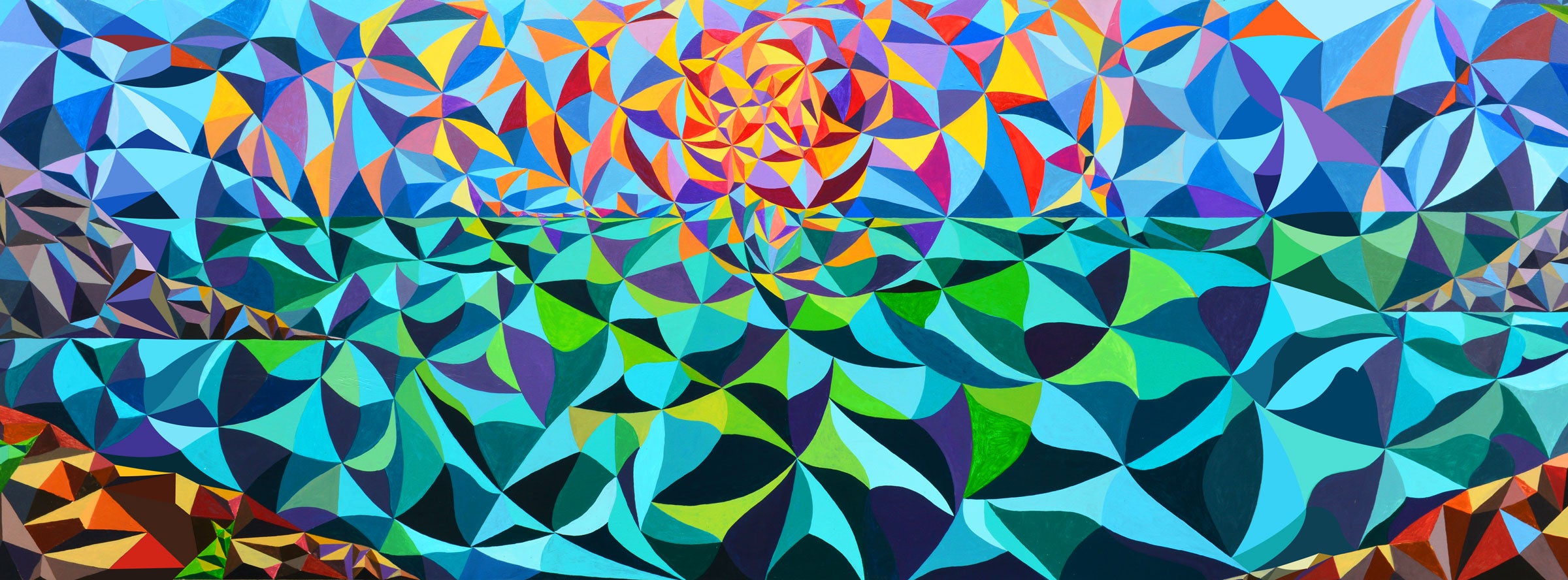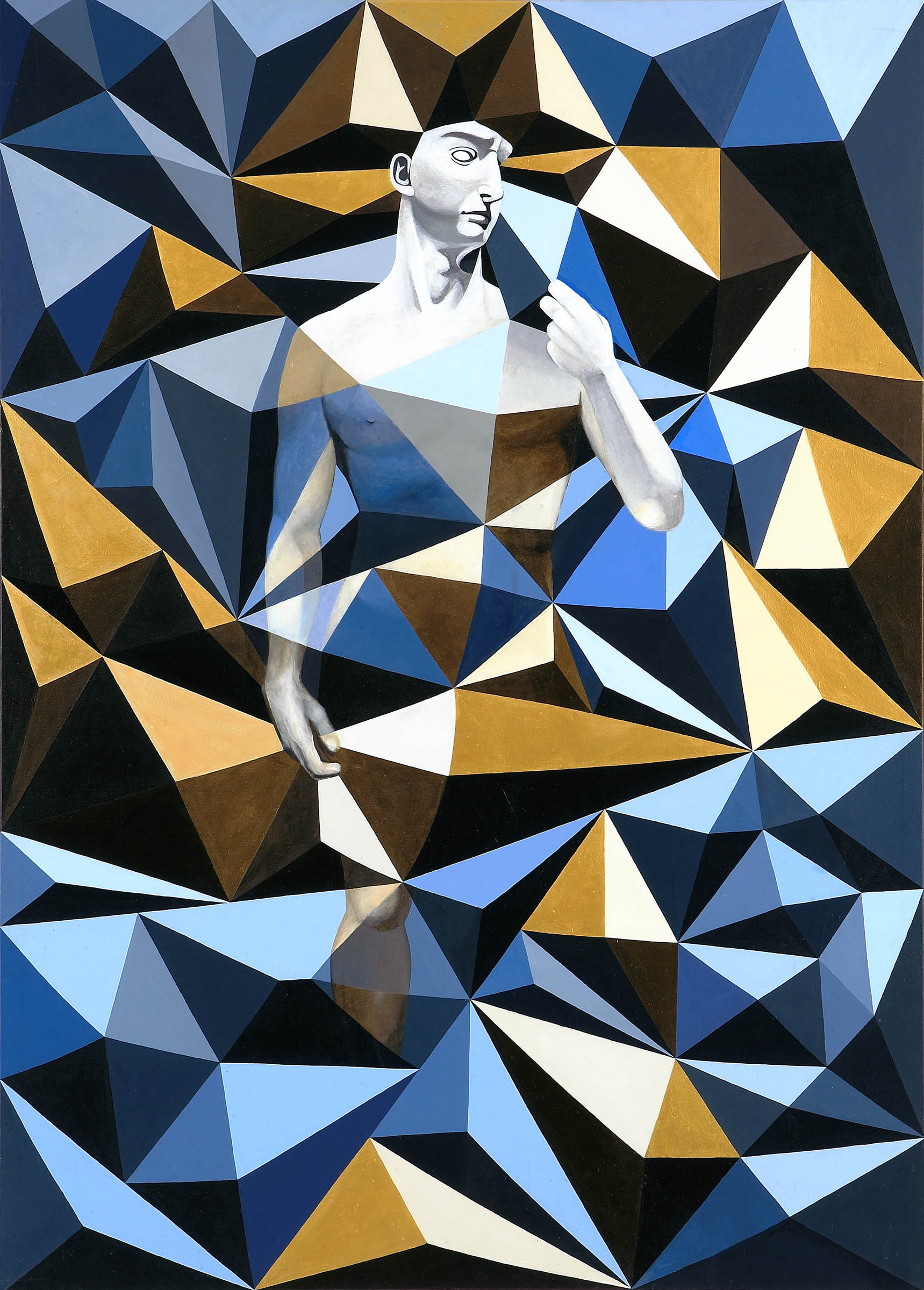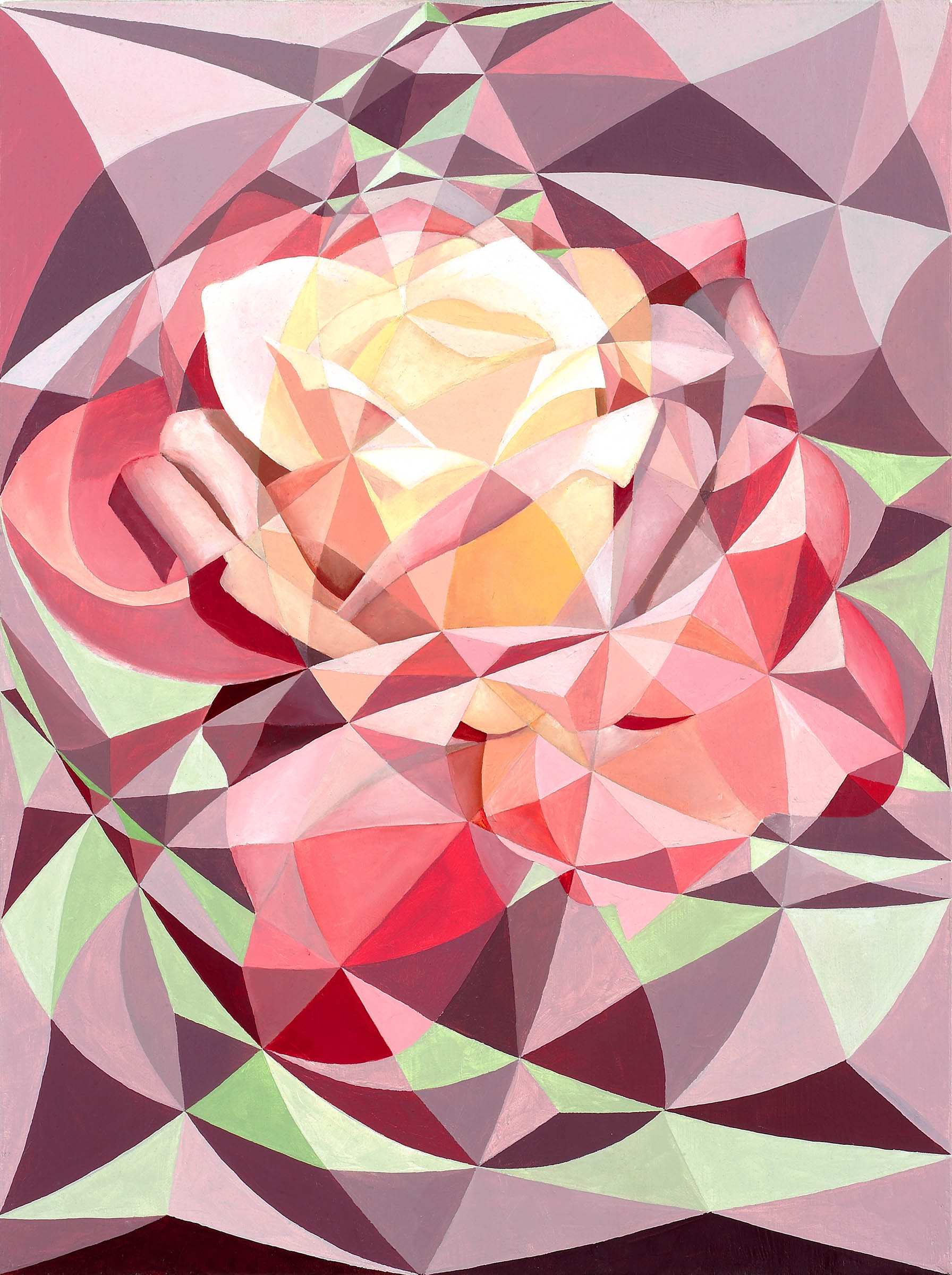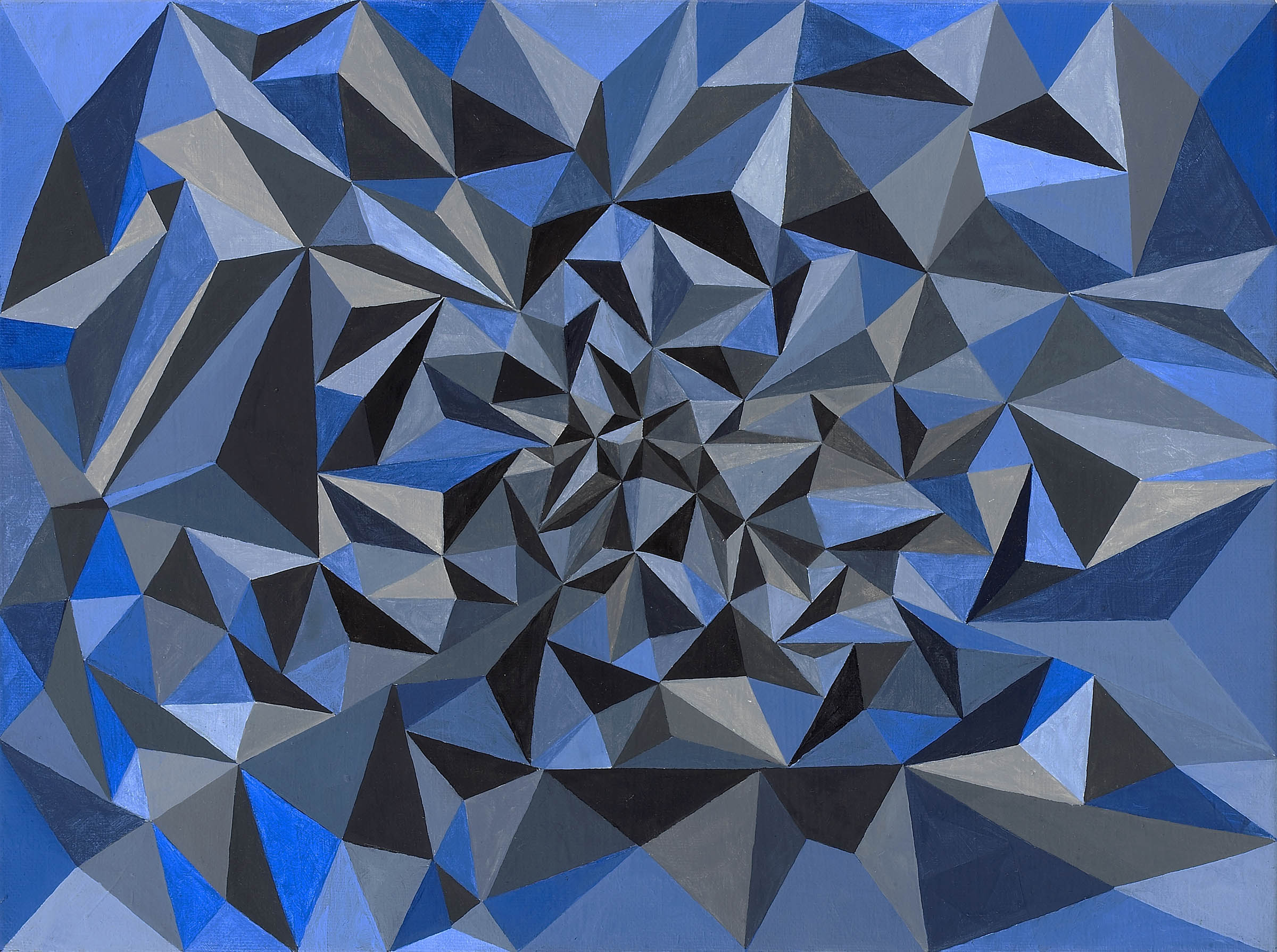Painting with Zee at Sotheby's La Jolla California 2023


Zed∙ism (zed iz´əm), n.
Fine Arts. a style of painting and sculpture created in 1996 in La Jolla California by artist Zee Yuransky. Zedism is characterized by the representational projection of a geometrical Z-axis out of the canvas plane and the organization of objects or images within that projection.

Experience the "A-HA" Moment Yourself
That we too are cosmic energy made up of very small periodic patterns of a wave-like substance called matter. A vibrating system that is constantly being acted upon by multiple hidden forces emanating originally from some ancient source or field. Bearing witness to how this phenomena looks or works via Yuransky’s Zedist creations, activates one's Virtual Cortex and in turn forces the subconscious mind upon abstracting and decoding the plausibility of his tessellated polygonal worlds and their corresponding embedded artifacts. It is hypothesized that having come from source energy yourself, there is an instant familiarity with the visual language of Zedism that is hard wired into your DNA’s muscle memory and hence Instinctual Spirit, or what is commonly called the Soul.
Using Morphology
Zedism is a new aesthetic painting and sculptural form inspired by the ever expanding knowledge of complex visual and digital order abundant in today’s advancing technological world. Zedism brings the viewer’s awareness to the complex patterns of nature in their elemental forms and shows our human relationship to these forms. Zedism synthesizes the order that is pervasive in all of nature (micro and macroscopic) with our own existential desire to make sense of the complexities of the cosmos. From a historical perspective, Zedism shows the viewer that there is a virtual, or exponential, progression of art and human knowledge.
It is a painting style whereby a 3-dimensional surface morphology is mapped onto the canvas plane and then utilized to construct imagery. The incorporated imagery may correspond to the geometry created by the surface morphology itself, span across multiple projections independently, or be placed in front of or behind the geometry altogether. The morphology itself can take on an infinite variety of forms, from the very homogeneous to the completely random. A key stylistic ingredient to a successful Zedist piece is the presentation of competition between the central imagery and underlying geometry for the forefront of the viewer’s perception.
Tales from the Zedi Master

Fibonacci & Tesselations
The way geometry can be “fit” together in a plane starts to unfold the Zedist process. Nature provides an infinite number of possibilities ranging from the very ordered to completely random networks called tessellations. Ordered forms are quite well studied in the mathematics of tilings and patterns while tessellations are mathematically constructed and studied using chaos theory. In addition, crystallography, a discipline which studies the structure of matter on a microscopic level, incorporates the laws of thermodynamics and molecular bond theory to explain how matter seeks to lower its free energy, or entropy, by naturally forming 3-dimensional Zedist or crystalline structures. These structures are simply the preferences of nature, or its way of providing symmetry, order and balance. Nature has a master plan for creation. As human beings, we become desensitized or are most likely oblivious to the chaos of patterns around us in our instinct to make sense of the world. Most everyone develops the survival skills of seeing an object, such as a tree as a tree pattern which fits with other object patterns stored in the brain for easy classification and recall. Zedism has created the ability to dissect common every day "tree" objects and integrate them with their fundamental molecular/structural origins. Once this is done, it allows the viewer to free associate the entity with its molecular origins once again and this becomes the launching point for the Zedist effect. The viewer is confronted with how natural or organic the Zedist morphologies feel because they strike a common chord in the mind that senses a harmony to the physical vibrations of nature itself. An artist is usually striving for balance, symmetry and order in perspective, lighting and color to give a work aesthetic beauty. Nature is doing the same thing with matter. Pairing these two creative forces is the artistic goal of Zedism. The reason we connect with Zedism is simply because as humans, we are a product of nature as well.
Activate Your Virtual Cortex
Zedism utilizes lighting, geometry and perspective to produce an illusion of form or structure projecting from (or sticking out of) the canvas. This Zedist morphology becomes the underlying theme of the painting. Concurrently, and without destroying this morphology, central imagery (which has its own unique lighting, color, perspective or shape) is embedded within or overlaid on the existing Zedist structure. As humans, we are binocular creatures (having
Using Zedism to Sculpt a Virtual 3D Space
Overlapping Disciplines

Science
Crystalline morphologies are described by complex mathematics, thermodynamics and quantum physics, all of which seek to explain the “hidden” ordered world. Therefore it is no wonder that they lend themselves so effortlessly to imagery in the macroscopic world. This is true because every object in the physical world can eventually be broken down into its fundamental molecular components, and once done, the most abundant and permanent of them are Zedist in appearance. What we see around us every day is nothing more than the manifestations of long-range order imposed at the molecular level. Scientists have spent a great deal of energy trying to predict and describe the dominant patterns in which nature or matter will form for a given system or material. This in turn allows accurate predictions of macroscopic properties such as strength, electrical conductivity, thermal and biological characteristics. This knowledge is a building block of complex working systems such as a computer, an automobile, building and even life. What Zedism does is simply show the viewer what some of these patterns might look like when blown up to canvas size. The fundamental balance of nature defines the balance of a Zedist piece. Bring to this phenomenon the artist's selection and incorporation of central imagery, and you have the workings of two creative forces (nature and consciousness) juxtaposed into one single theme. Zedism defines the intricacies of our relationship to an aesthetic energetic system.

Art
The most obvious artistic relationship Zedism has is to cubism, or more broadly, abstract expressionism. What the cubists achieved aesthetically was the deconstruction of images and objects into their fundamental geometric components while showing multiple sides or perspectives simultaneously. Other expressionists deconstructed images into color patterns. Though Zedism and these schools both rely on deconstruction to capture the viewer and render the images, they differ significantly in the perspectives utilized. Where cubism breaks the image down into its existing component geometry, Zedism fits or overlays the image into a separate, yet natural geometric morphology. Where the expressionists broke the image down into discretely enhanced color components, Zedism gives order to the location of the color components that fit into nature’s schema and ordering. Metaphorically, Zedism occupies the “Z” or 3rd axis of artistic creation. The “X” axis corresponds to classicism (linear) or realism, the “Y” axis corresponds to expressionism (planer) or emotional, and the “Z” corresponds to Zedism (three dimensional) or virtual. It has joined classicism (symmetry, perspective) and expressionism (color and form) and given them a new dimension or vertical Z-axis. As culturally anticipated, Zedism corresponds seamlessly to our industrialized digital, or virtual, three dimensional world of the computer and digital systems. This new world is a result of the American technological revolution, but as pointed out, goes back to the fundamental core of art in nature itself.

Music
The patterns present in the structure of song are also represented in a Zedist painting. Each Zedist projection, having multiple sides, can be thought of as a musical chord. Each side to the chord is a note. The lighting scheme determines which notes are base notes (dark) and which are top notes (light). A run of chords in the same color scheme would all be in a certain key. The overall painting, composed in multiple keys, would be the song. The song could be in harmony, in discord, or challenge the viewer to find the groove intended by the artist. Music is vibration or periodic sound waves much like other forms of cosmic energy that can be studied and broken down into their component parts. These patterns delight us because once again we identify them with source energy that these fundamental patterns represent to our senses. Why are they so pleasing? It goes back to our structural DNA having resonated from the same ancient primordial cosmic energy source.

The Language of Nature on a Cosmic Level
Zedism synthesizes nature's ordered forms with the emotional and intellectual phenomenon of human consciousness. It is primarily rooted in the organizational language of how matter and nature expresses itself to our visual, and thereby, emotional and intellectual centers. Specifically, the part of those centers that urge forth the creative process as a survival tool. It seeks to improve our awareness of the evolutionary processes of the universe, matter, life, conciousness, intellect, emotion and human destiny and reduce the gap between todays scientific, artistic and philosophic camps by associating them all to the beauty of natures cumulative order. Zedism seeks to improve our ability to understand the assymetry of nature's language and the human condition by the stimulation of our Virtual Cortex (abstracting mechanisms) and attempts to create a universal human awareness by inspiring today’s complex cultural heroes towards the cohesive paths of reason, self awareness, and social responsibility.
